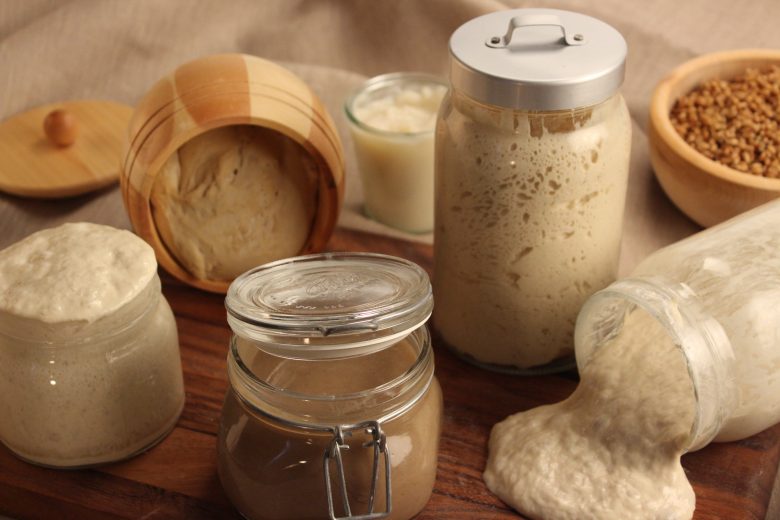Pre-dough
Pre-dough is a dough process in which a portion of flour, yeast, and water is mixed before the preparation of the main dough. Wheat breads and baked goods were made with a direct dough process. However, it was found that this efficient dough process didn’t have a positive impact on taste and freshness. That is why today many wheat baked goods are made with a pre-dough or with a long, direct dough process. Pre-doughs are indispensable for the classics like baguette, pantone, and ciabatta!
Advantages of Pre-doughs:
- Better absorption of water and thus a better pre-swell
- Yeast growth up to 30% with an 8 hour standing time
- Formation of aromatic flavors
- More stretchy doughs
- Softer and better crumb
- Longer shelf-life of bread
- And of course to achieve a more aromatic taste
The inclusion of pre-dough can be varied according to your own taste and is usually around 30% of the final dough amount.
Types of Pre-doughs
- Pre-dough to swell raw ingredients
- Pre-dough to enhance the flavor of wheat dough
- Pre-dough to sour wheat dough
- Pre-dough to sour rye dough
The following points should be noted:
Ripening time:
It should be sufficient to keep the pre-dough in a temperature controlled room. Cooling can be used to bridge the longer storage times.
The preparation temperature of yeast predoughs should be 20°C because yeast bacteria are most comfortable at this temperature. It is important that the standing time not be longer than 24 hours because otherwise the gluten will breakdown too much and stronger acidification could occur.
Dough yield:
This is dependent on the type of pre-dough
– Poolish TA 200
– Biga TA150
– Sponge TA160
– Pâte fermentée TA 165
Yeast content:
The yeast amount should be 0.3%-1% of the total flour amount in the pre-dough. My experience has shown that lower percentages bring less aromatic development and can jeopardize success because the flour’s own microorganisms cannot be sufficiently suppressed and false fermentation can occur.
The yeast used in the predough should generally not be taken into account in the dough recipe because after fermentation the yeast in the pre-dough can usually not achieve the same raising performance as freshly added yeast. If the main dough rises too quickly the amount of yeast can always be reduced.
Flour content:
You should be good using 30% of the total flour content. Higher proportions can be used with positive results. For doughs that are given a long rise time, 10-15% should be ideal. It of course depends on the temperature and the storage time.
Salt usage:
In pre-doughs with a yeast content of 1%, salt is not necessary. However, in order to slow down the growth of lactic acid bacteria, a small amount of salt can be useful. In fermented pre-doughs that are stored for up to 48 hours it is necessary to add salt. The addition amount is 2% of the amount of flour in the pre-dough.
Standing time:
Wheat pre-doughs should ripen for 15 hours, only then can the yeasts have formed sufficient aromatic flavors that can also be noticed in the taste of the final baked goods. Shorter times only have the effect of swelling the wheat flour.
Pre-dough Temperature:
The recommended beginning temperature is 25°C. At this temperature you achieve the fast activation of yeast and a more certain aroma development. Both are important to achieve the desired results of pre-dough usage.
Recommendations for pre-dough content for various breads and baked goods:
- Breads with straight production, 20%-30%
- Breads with long rise, max 10%
- Free form wheat breads, 20%-30%
- Wheat breads formed in basket, 30%-40%
- Mixed flour bread, 20% (of total wheat content)
- Yeast dough/ Croissant, 20%-30%
Spelt pre-dough
Pre-dough usage in spelt breads has a very positive impact. It is important here though that the pre-dough temperature is stored at a very cool room temperature, eg. 6°C. This helps to prevent the breakdown of spelt gluten. This pre-dough has a positive impact on shelf life, quite contrary to the use of spelt sourdough. For comparison, the breads should be judged two days after baking.


